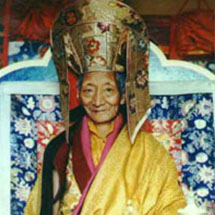3 Year Retreat
About the 3 Year Retreat
History
The three-year retreat is a traditional program of intensive meditation practices intended for serious students who wish to train in the core teachings and practices of the Kagyu Lineage. The three-year retreat was formally instituted in the nineteenth century by the great master Jamgon Kongtrul Lodrö Taye. The three year and three month timeframe derives from teachings in the Kalachakra Tantra regarding the time required to transform karmic energy into wisdom energy when engaged in undistracted meditation with proper view.
The very first three-year retreat in North America commenced at Palpung (formerly Kagyu) Thubten Chöling in 1982, following consecration of the retreat land by His Holiness the Sixteenth Gyalwang Karmapa in 1980. Dorje Chang Kalu Rinpoche bestowed all the empowerments and performed the sealing ceremony for the first two retreats. Subsequent retreat empowerments have been given primarily by His Eminence Chamgon Kenting Tai Situ Rinpoche, along with the Very Venerable Bokar Rinpoche, Khenchen Thrangu Rinpoche, Yongey Mingyur Rinpoche and Lama Norlha Rinpoche.
The retreat program at PTC was created by Lama Norlha Rinpoche, who completed two three-year retreats in Tibet by the age of 21 and is renowned for his mastery of the Six Yogas of Naropa. He was one of the most experienced teachers of the traditional Kagyu three-year retreat. When he passed away in 2018, he had guided 8 1/2 three-year retreats at PTC and numerous others in India and Tibet.
Guru Vajradhara Chamgon Kenting Tai Situ Rinpoche has since appointed Lama Tsering Dakpa of Palpung Sherabling as retreat master of PTC. The tenth cycle of the retreat was sealed in May 2022.
Support the Three Year Retreat Program
Overview
Participants in the three-year retreat read and chant from the original Tibetan texts, learning and practicing the same progressive stages of meditation taught in traditional three-year retreats in Tibet. English translations of teachings and texts are provided. Many, but not all, chanting texts are transliterated.
At the heart of the retreat are the practices of Mahamudra and the Six Yogas of Naropa . The related curriculum includes the main preliminary practices, guru yogas, deity mandalas and mind instructions of the Karma Kagyu tradition, as well as practices from the Shangpa Kagyu and Nyingma traditions.
The retreat structure follows the tradition established by Jamgön Kongtrül Lodrö Thaye, which includes four meditation sessions a day and group chanting in the morning and evening. The retreat environment is designed to facilitate devoting all the energies of body, speech and mind to the transformative practices of the Vajrayana.
Intention and Commitment

“If you are considering doing a three-year retreat in the future, you must prepare yourself well for it. If you can actually follow through on it, it will give extraordinary meaning to your human life.” — Dorje Chang Kalu Rinpoche
Life in three-year retreat is governed by a set of rules based on instructions from Dorje Chang Kalu Rinpoche, which are designed to simplify life, reduce distractions, and promote harmony in the group. It is very important to enter retreat fully prepared to respect and adhere to these rules, which will be discussed with retreatants beforehand. Those with strong resolve and deeply grounded appreciation for the profound methods of the Dharma will meet the rigors of retreat with joyful diligence. Attempting to engage in a three-year retreat without some direct experience of the efficacy of Dharma practice and at least a basic understanding of the nature of mind is likely to lead to an unhappy result.
Undertaking a three-year retreat is a serious commitment. Retreatants hold monastic vows and wear robes for the duration of the retreat. The schedule is strict, without any days off. Retreatants sleep sitting up in a meditation box, and are required to attend all group chanting sessions and participate in group work activities. No phone or internet access is allowed, and incoming and outgoing mail occurs once a week. Participants in the three-year retreat are permitted to send a maximum of four letters a month to family members and/or friends, and two letters a month to monastery residents. Participants have no direct contact with anyone outside the retreat except the retreat master, the resident retreat caretakers, and visiting Rinpoches who bestow teachings or empowerments within the retreat.
How to Prepare for Three-Year Retreat
In order to prepare for the three-year retreat program, consider the following recommendations in the areas of Dharma practice, Dharma study, community service, and language skills. It is equally necessary to address practical matters such as physical and mental health, financial readiness, and minimizing technology, which are also addressed below. Most importantly, considering and conjuring proper motivation is absolutely essential for a beneficial retreat experience.
Dharma Practice
- Begin or continue shinay/shamatha meditation and the Kagyu ngöndro (preliminary practices).
- Serious prospective retreatants are asked to join our 3-yr-retreat@kagyu.com program to begin these practices under a retreat-graduate mentor from PTC and get to know us better.
- Participate in solo and/or group retreats for at least 1 week.
- Take the refuge vow and bodhisattva vow if possible.
Dharma Study
Read and study:
- Jewel Ornament of Liberation graduated path teaching by Gampopa
- The Great Path of Awakening lojong commentary by Jamgon Kongtrul
- Training the Mind lojong commentary by Chogyam Trungpa
- Torch of True Meaning preliminary practice commentary by Jamgon Kongtrul
- The Profound Treasury of the Ocean of Dharma Vol.1-3 by Chogyam Trungpa
Also look for upcoming teachings and programs at PTC that may assist in preparation for three-year retreat.
Community Service
Volunteer at your local Dharma center and/or at PTC. Service to the Dharma supports the community as well as earns valuable merit for your retreat.
Tibetan Language
Although some transliterations are available, all practices in retreat are conducted in Tibetan, so you will need to learn to read Tibetan and chant at a moderate pace. Learning to chant the morning and evening prayers is a priority. Written resources for learning to read and understand literary Tibetan are available from the monastery library. In addition, there are an increasing number of resources available online and in apps and books, such as:
- http://www.ryi.org/
- www.tibetanlanguage.org
- http://www.amazon.com/Translating-Buddhism-Tibetan-Joe-Wilson/dp/0937938343
- http://www.amazon.com/How-Read-Classical-Tibetan-Volume/dp/1559391782/
- http://appfinder.lisisoft.com/ipad-iphone-apps/tibetan-language.html
- http://learntibetian.files.wordpress.com/2011/09/tibetan-language-correspondence-course-sara-harding-jeremy-morrelli.pdf
There are also excellent free Tibetan Dictionary apps for tablets and smartphones.
- Apple: http://appfinder.lisisoft.com/app/tibetan-dictionary.html
- Android: https://play.google.com/store/apps/details?id=com.monlamit.dictionary
Additionally, the classic Tibetan-English Dictionary, with Sanskrit Synonyms compiled by Sarat Chandra Das, can be downloaded from the Google Play store, for reading in a web browser or on Android or iOS devices.
Personal Health
Maintain or obtain medical insurance, required for both domestic and international retreatants.
Take care of your physical, dental, mental and emotional health so that you are in prime shape for retreat.
Financial and Practical Matters
Ensure that you will have the funds necessary to pay the retreat tuition, and cover personal expenses
for three plus years.
If paid up front, the cost is $27,000 for the entire retreat, which generally lasts 39-41 months. Other payment plans are available, however. Please contact 3-yr-retreat@kagyu.com for more information.
Additionally, retreatants are required to participate in a four- to six-month preparation program prior to the beginning of retreat, which costs $2,500. Fees cover room and board, teachings and certain basic supplies.
There are organizations that provide full and partial scholarships to qualified applicants. Tsadra Foundation and Khyentse Foundation are two.
Minimize your possessions. Retreat rooms average about 10’ x 10’ and personal possessions are restricted to those rooms. The rooms are furnished with a meditation box, pecha (text) bench, and a shrine. Sleeping upright in the meditation box is a practice of retreat.
Prepare to be tech-free. Personal computers, phones, and devices with cellular or wireless capacity are strictly prohibited.
Generally put your affairs in order. Take care of any outstanding financial, medical or other practical matters so that you are ready to focus fully on the practice and study of Dharma.
Motivation
Deeply consider your motivation for wanting to participate in a three-year retreat. Retreat can be a challenging, and yet rewarding, experience. To sustain you through the process, a strong motivation rooted in the wish to attain enlightenment for the benefit of beings is vital to properly completing the program.
Three-Year Retreat FAQ
What kinds of people do three-year retreat?
Many different kinds of people do three-year retreat. The main requirement is a serious commitment to practice dharma. Recent college graduates, professionals, retirees, parents, and monastics have all done retreat
What do I need to bring with me for retreat?
Palpung Thubten Chöling provides practice texts, transcripts of teachings, and certain room furnishings and basic supplies. All other items are the responsibility of individual retreatants. For a complete list of items needed for the three-year retreat, as well as the list of supplies provided by the Palpung Thubten Chöling please contact: 3-yr-retreat@kagyu.com
What is the retreat schedule?
The daily practice schedule changes as various practices are added to the daily commitment, but a typical day is as follows:
| 4:00 am | Yoga of Awakening, Ngöndro (Preliminary practices) |
| 5:35 am | Chutor (Water Offering) |
| 6:00-8:00 am | Group Chanting: Tara and other prayers |
| 8:00-8:20 am | Breakfast |
| 8:20-10:30 am | Main Practice Session 1 followed by aspiration prayers |
| 10:50-11:45 am | Tibetan Yoga with group |
| 12:00-2:00 pm | Lunch and free time, or work, depending on schedule |
| 2:00-4:30 pm | Main Practice Session 2 followed by aspiration prayers |
| 5:00-7:00 pm | Group Chanting: Mahakala |
| 7:00-7:15 pm | Dinner |
| 7:15-8:30 pm | Dorje Purba, Practice Session 3 |
| 8:30-9:50 pm | Concluding Rituals, Chöd, aspiration prayers |
What are the retreat facilities like?
The two drupkang (retreat house) buildings—Naro Ösal Ling (the men’s retreat) and Nigu Kachö Ling (the women’s retreat)—both have accommodations for up to ten retreatants with in-house bathrooms, showers, and laundry facilities. In addition to the living quarters, each drupkang also has a shrine room, a bepkang (yoga room), a simple kitchen, a finished basement area for eating, working and study, a circumambulation path, and a small yard enclosed by a fence.
Why do retreatants sleep sitting up?
Sleeping sitting up is more conducive to bringing awareness into sleep and dream states. It is one of many profound methods for engaging the full depth and breadth of our experience on the path to enlightenment.
What commitments are associated with the retreat?
After completing the retreat, many of the practices introduced in retreat are considered lifelong daily commitments.
Apply for Three-Year Retreat at Palpung Thubten Chöling
How to Apply for Three-Year Retreat at Palpung Thubten Chöling
The tenth cycle of three-year retreat is currently in session. At this time we do not have a projected start date for the next three-year retreat, and are not currently accepting applications. If you are interested in participating in our next retreat, please consider visiting the monastery; attending teachings, chanting practices and classes; and beginning to enact the recommendations listed above. We also suggest that you read our application which will eventually be required along with your professional resume/CV and two letters of recommendation, as specified in the application.
Any further questions may be sent to:
Lama Zangmo and Lama Shedron, Retreat Caretakers
retreat.3year@gmail.com
or by mail:
Lama Zangmo and Lama Shedron
Palpung Thubten Choling
245 Sheafe Rd.
Wappingers Falls, NY 12590
The application process will also involve interviews with our retreat master Drupon Lama Tsering and retreat caretakers, a medical examination, and an assessment with our licensed social worker.
In addition, please read the How to Prepare for Three-Year Retreat information above and consider implementing its suggestions, as well as joining our community for teachings and events.


